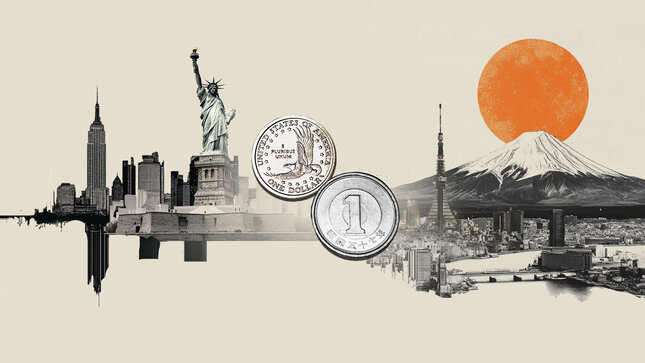THE COMMODITIES MARKET
Technical Overview
Commodities Explained
Commodities are raw materials or basic products used to produce other goods or deliver services. They often take center stage during inflationary periods, serving as a hedge against inflation. Gold, in particular, has an important psychological value as a hedge against economic uncertainty.
But other commodities can also signal shifts in economic cycles. A bottom and rise in copper prices – widely regarded as a barometer of economic health – may signal bearish conditions for bonds and utilities, which are sensitive to interest rate changes.
Energy prices impact the whole economy, besides having a psychological effect on inflation. Rising oil prices, for instance, act as a “tax” on the economy as it tends to slow growth prospects. This often turns into lower interest rates and higher bond prices.
COMMODITIES AND THE US DOLLAR
Commodities, priced in US dollars, tend to have an inverse relationship with the USD. A strong USD often puts downward pressure on commodity prices, making them less attractive to investors.
Commodity groups
Similar to industry sectors in equity markets, the commodity market consists of several groups, each providing different economic signals.
Precious metals: Gold, Silver, Platinum, and Palladium. Copper, despite being used primarily for industrial purposes, is usually also lumped into this category. Precious metals are very popular among Forex traders due to their perceived monetary value.
Energy: Oil is the most prone to supply shocks, political tensions in Oil-producing countries or regions, policies from the Organization of the Petroleum Exporting Countries (OPEC), and volatile demand from emerging countries. These factors create significant risks for those trading in this market. Higher Oil prices tend to negatively impact equities, raising the prospects of higher inflation and slower growth.
Grains: Grain prices fluctuate on the so-called crop year, with planting and harvesting forming tradable price cycles. However, those cycles are influenced by unpredictable weather conditions. Key agricultural commodities include Corn, Soybeans, Wheat and Oats.
Soft commodities: This category includes coffee, orange juice, cocoa, sugar and cotton.
Some commodities, specifically the metals group, are considered tangible assets because they are non-perishable. Meanwhile, Silver and Gold have the advantage of consistent specifications across nations, unlike Texas and Brent crude Oil, which differ in composition.
GOLD SPOT - DAILY CHART
US DOLLAR INDEX - DAILY CHART
PALLADIUM - CHART
WTI OIL- DAILY CHART
Commodity Currencies
Commodity currencies are said to be correlated with the price of commodities. The Australian dollar, the Canadian dollar and the New Zealand dollar are considered commodity currencies because the economies backed by the named currencies are sensitive to commodity valuations. In this light, be sure to factor in the global economic outlook when evaluating any of the commodity currencies. In any case, correlation is not causation and such relationships can and do break down.
AUD/USD SPOT - 60 MIN
AUD
Being China a tremendous consumer of raw materials, and Australia a leading exporter of metals, coal and grains, market perceptions of strong demand from China could see the Australian dollar gain in sympathy with commodity prices. The boom in Asian regional growth over the past decade has supported the Australian economy, bringing with it higher levels of inflation. This explains why the RBA maintained higher interest rates than other major central banks.
Visit a dedicated AUD/USD page.
CAD/USD SPOT (RECIPROCAL)- 60 MIN
CAD
Canada is the fifth largest gold producer and fourteenth largest oil producer. Thereby, strong commodity prices generally benefit domestic producers and increase their income from exports. There is a caveat, though, and that is the positive correlation makes the Canadian dollar more expensive in USD terms. Since Canada's economy is very dependent on external demand from the United States, a strong CAD could filter into reduced demand for Canadian Exports.
Visit a dedicated USD/CAD page.
NZD/USD SPOT - 60 MIN
NZD
New Zealand is primarily an agricultural-commodity-producing economy (dairy products and meat in particular), and therefore it displays a weaker correlation than CAD and AUD to metal and energy prices. But still, it is highly sensitive to global performance, especially of its key trading partners, Australia, United States and Japan. It's commodity currency status is also to be understood via its dependency on the Australian economy, and since Australia is very commodity driven, any changes affecting the Australian economy affect New Zealand as well. Against the Japanese yen, the NZD can bee regarded as a risk barometer.
HOW BULLISH ARE COMMODITY CURRENCIES AND THE USD AGAINST A BASQUET OF 21 WORLD CURRENCIES?
The Bullish Percentage Index compares the four majors against the 21 most traded currencies (according to the BIS statistics). Among these currencies are the Korean Won, the Mexican Peso, the Turkish Lira, the Brazilian Real, etc. It shows the percentage of currency crosses on buy signals on Point and Figure charts. Point and Figure charts have the particularity of being objectively bullish or bearish, depending on the most recent double-top/bottom buy or sell signal. The Bullish Percentage Index is a breadth indicator used in stock indices, and its logic has been adopted by FXStreet.com to measure currency strength.
The index can be read as an oscillator, with readings between 0% and 100%. It is updated on a daily basis, on GMT close, and compared to the same data 5 days ago.
Latest Commodities Analysis
Editors' picks

EUR/USD moves sideways below 1.1800 on Christmas Eve
EUR/USD struggles to find direction and trades in a narrow channel below 1.1800 after posting gains for two consecutive days. Bond and stock markets in the US will open at the usual time and close early on Christmas Eve, allowing the trading action to remain subdued.

GBP/USD keeps range around 1.3500 amid quiet markets
GBP/USD keeps its range trade intact at around 1.3500 on Wednesday. The Pound Sterling holds the upper hand over the US Dollar amid pre-Christmas light trading as traders move to the sidelines heading into the holiday season.

USD/JPY corrects further to near 155.80, gives up entire BoJ policy-led gains
USD/JPY surrenders its entire gains made on the BoJ policy announcement day, and retraces to near 155.80. Investors are in vogue over the outlook of the BoJ’s monetary tightening campaign. The Fed is expected to cut interest rates by at least 50 bps next year.

Gold retreats from record highs, trades below $4,500
Gold retreats after setting a new record-high above $4,520 earlier in the day and trades in a tight range below $4,500 as trading volumes thin out ahead of the Christmas break. The US Dollar selling bias remains unabated on the back of dovish Fed expectations, which continues to act as a tailwind for the bullion amid persistent geopolitical risks.

WTI Price Forecast: Momentum improves, but downside risks linger below $60
WTI holds near two-week highs as holiday-thinned trade limits volatility. US-Venezuela tensions provide modest support to crude prices. Technical indicators show improving momentum, though downside risks remain below the $60 level.